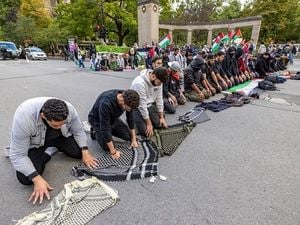On November 23, 2025, the southern Thai province of Songkhla found itself once again at the mercy of relentless floodwaters, with the district of Hat Yai bearing the brunt of the disaster. In a swift and coordinated response, the 42nd Military Circle (known locally as มทบ.42) launched an urgent aerial survey mission to assess the extent of the flooding and to pinpoint suitable landing zones (LZ) for relief logistics. The operation was spearheaded by Colonel Thanut Pisansitthiwat, the Deputy Commander of the 42nd Military Circle, who personally took to the skies above the inundated landscape.
According to coverage reported by local news on November 23, the military’s efforts were focused on overcoming a host of logistical challenges. With many roads submerged or completely cut off, conventional delivery routes for emergency aid had become impassable. The aerial survey was not just a matter of routine reconnaissance; it was a lifeline for thousands of residents stranded by rising floodwaters and isolated from basic necessities.
Colonel Thanut’s mission was clear: find and secure landing zones that could serve as drop-off points for relief supplies, including food, drinking water, medicine, and other essentials. The military’s approach was methodical and urgent—mapping out the most critical access points and ranking areas by the immediacy of their need. The goal was to ensure that no community, no matter how remote or cut off, would be left behind.
“The Royal Thai Army is ready to mobilize all personnel, equipment, and resources to help the people to the fullest extent,” Colonel Thanut emphasized, as relayed by multiple local outlets. He underscored the army’s commitment to integrating its response with provincial authorities, rescue units, and local organizations. This multi-agency approach, he said, was vital for accelerating relief efforts and bringing the crisis under control as swiftly as possible.
The urgency of the situation was palpable. Reports indicated that the flooding in Hat Yai and surrounding areas was growing more severe, affecting a wide swath of the population. For many, access to food, clean water, and medical care had become a daily struggle. The logistics base established by the 42nd Military Circle quickly became the nerve center of the relief operation, coordinating the movement of supplies and personnel into the hardest-hit zones.
The aerial reconnaissance mission was not a one-off event. Colonel Thanut made it clear that the military would continue to monitor the situation closely and reevaluate landing zones as conditions evolved. “We will keep assessing additional LZ points to ensure that the delivery of aid is safe and covers all affected areas,” he stated. This ongoing evaluation was crucial, given the unpredictable nature of floodwaters and the shifting needs of the communities in distress.
Behind the scenes, the logistics base buzzed with activity. Soldiers and support staff worked around the clock, loading helicopters and trucks with relief packages destined for isolated villages. The coordination required was immense, with each delivery meticulously planned to avoid wasted trips and ensure maximum coverage. The military’s experience in disaster response—honed over years of similar emergencies—was evident in the precision and speed of the operation.
The partnership with provincial authorities was another key element of the response. Songkhla’s local government, already stretched thin by the scale of the disaster, welcomed the military’s support. Joint command centers sprang up, sharing real-time information and adjusting strategies as new reports came in. Local rescue teams, familiar with the terrain and the needs of their communities, played a crucial role in guiding military convoys and identifying the most vulnerable residents.
It wasn’t just about delivering supplies. The 42nd Military Circle also deployed medical teams to provide urgent care to those suffering from flood-related illnesses and injuries. Temporary shelters were set up for families forced from their homes, with soldiers helping to distribute blankets and set up makeshift kitchens. The sense of solidarity was unmistakable—neighbors helping neighbors, with the military acting as both organizer and participant in the communal response.
The scale of the flooding brought back memories of previous disasters in the region, but the response this time was notably more coordinated. Lessons learned from past emergencies were put into practice, from the use of advanced mapping technology to the integration of local knowledge into logistical planning. The emphasis on finding and securing landing zones, in particular, was a testament to the military’s adaptability in the face of changing conditions.
As the days wore on, the situation remained fluid. Water levels fluctuated, sometimes receding in one district only to surge in another. The military’s commitment to a dynamic, ongoing assessment meant that relief could be redirected as needed, minimizing delays and ensuring that supplies reached those in greatest need. According to official statements, the 42nd Military Circle would maintain its presence in the area for as long as necessary, with the logistics base serving as the operational hub for the foreseeable future.
For the people of Hat Yai and Songkhla, the military’s intervention provided a measure of reassurance amid uncertainty. While the full recovery would take time, the rapid mobilization of resources and the emphasis on coordinated action offered hope that the worst of the crisis could be mitigated. “We are determined to resolve the situation as quickly as possible,” Colonel Thanut reiterated, echoing the resolve of everyone involved in the relief mission.
In the coming weeks, attention will turn to long-term recovery and the rebuilding of infrastructure damaged by the floods. But for now, the focus remains squarely on meeting immediate needs—getting food, water, and medicine to those who need it most, and ensuring that no one is left stranded by the rising tide. The story unfolding in Songkhla is one of resilience, cooperation, and the unwavering determination of both officials and ordinary citizens to weather the storm together.
As the helicopters continue to crisscross the skies above Hat Yai, each sortie is a reminder of the power of collective action in the face of disaster. The logistics base established by the 42nd Military Circle stands as a testament to what can be achieved when urgency, expertise, and compassion come together in a time of crisis.



